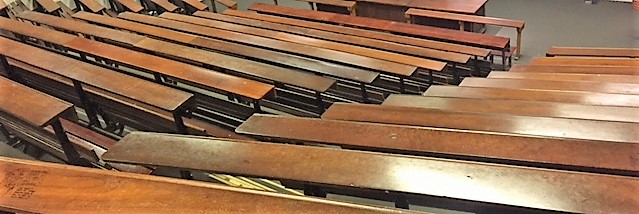Under s 136(1)(ca) of the ASIC Act, ASIC is required to report in its annual report on its activities under Chapter 5 and Schedule 2 of the Corporations Act, and the exercise of its information gathering powers, among other activities.
Although not designated under s 136, here are some insolvency comments and figures from ASIC’s 2017-2018 annual report – its liquidator registration and regulation activities, its amicus interventions, phoenix regulation, reports of misconduct etc.
Liquidator registration and regulation powers under Schedule 2
There were 16 applications for registrations as a liquidator, of which 4 were granted with no conditions, 7 granted with conditions,[1] and 5 refused.
Of the 5 refused, 3 sought AAT review, 1 was successful[2] and 2 remain to be decided.
Applications under s 20-40 to vary conditions imposed on liquidators totalled 5, with 4 having the conditions varied, and one fully granted.
Administrative and secretariat services are provided to these independent liquidator registration and discipline committees by the ASIC Chief Legal Office.
Directions to liquidators to comply (ss 40-5, 40-10, 40-15) were “successfully used … on several occasions … either to resolve our concerns by achieving compliance or to advance our investigations”.
ASIC served 2 show cause notices under s 40-40 one of which was then referred to a disciplinary committee, which determined that the liquidator should continue to be registered subject to a condition that ‘he’ undertake specified training. The other matter is on-going.
ASIC exercised its power under s 40-111 to remove a bankrupt liquidator from the register of liquidators. ASIC then exercised its powers to appoint a replacement liquidator to his administrations, perhaps under s 437A.
After the AAT confirmed the cancellation of Randall Joubert as a liquidator,[3] ASIC obtained court orders that Joubert be removed and that other liquidators be appointed.[4]
ASIC served 3 section 30B notices under the ASIC Act on liquidators requesting information.
Other points
Some other points from the annual report are:
- ASIC ‘successfully implemented’ the September 2017 changes introduced under the second tranche of the ILRA 2016 by updating IT systems, regulatory guides, information sheets and forms, and in helping liquidators to comply with their new obligations. ASIC worked closely with third-party software suppliers to ensure the industry was ready for the reforms.
- ASIC’s appeared as amicus in the Network Ten proceedings, in relation to the independence of Korda Mentha; and in Provident Capital Ltd as to the reasonableness of liquidators’ remuneration.
- ASIC’s review of liquidators’ compliance with lodging and publication requirements involved ASIC reviewing 26,000 external administrations.
- ASIC’s pursues activities in relation to illegal phoenix activity. It reports the conviction of a former Noodle Box franchisee, resulting in his two months imprisonment and disqualification from managing corporations for five years.
- ASIC administered $3.583m in Assetless Administration Fund payments to insolvency practitioners to undertake preliminary investigations of suspected breaches of directors’ duties and fraudulent conduct and to report to ASIC for further action as appropriate. ASIC received 784 applications for funding in 2017–18 – the highest number of applications ever received. Reports funded by the AA Fund assisted in approximately 93% of the 45 director bannings.
- In 2017–18, ASIC dealt with 9,567 reports of alleged misconduct overall, of which 6% were a failure to provide books and records or a report as to affairs to an insolvency practitioner; 5% were fraud allegations; 5% involved insolvency practitioner misconduct; and 4% were ‘insolvency matters’ generally. Over 50% warranted no further action, over 21 % required referral for action.
Next
Equivalent reports on AFSA and ARITA.
^^^^^^^^^^^^^^^^^^^^^
[1] For example, James Dampney had a condition imposed under s 20-55(3)(b), of the Insolvency Practice Schedule (Corporations) to only take joint appointments and to be subject to meet the continuing professional education requirements as set out in s20-5(2) and (3) of the Insolvency Practice Rules (Corporations) 2016. Liam Healey was required to attend and successfully complete each of the four continuing professional development courses offered by ARITA within two years of the date of registration as a liquidator. ARITA chooses a liquidator to sit on these committees. See www.asic.gov.au for full details.
[2] Mansfield and A committee convened under section 20-10 of the Insolvency Practice Schedule (Corporations) [2018] AATA 1510. There is no record yet of Mr Mansfield subsequently being registered.
[3] Joubert and Members of the Companies Auditors and Liquidators Disciplinary Board [2018] AATA 944
[4] NSW Supreme Court 2018/00199579, 29 June 2018



